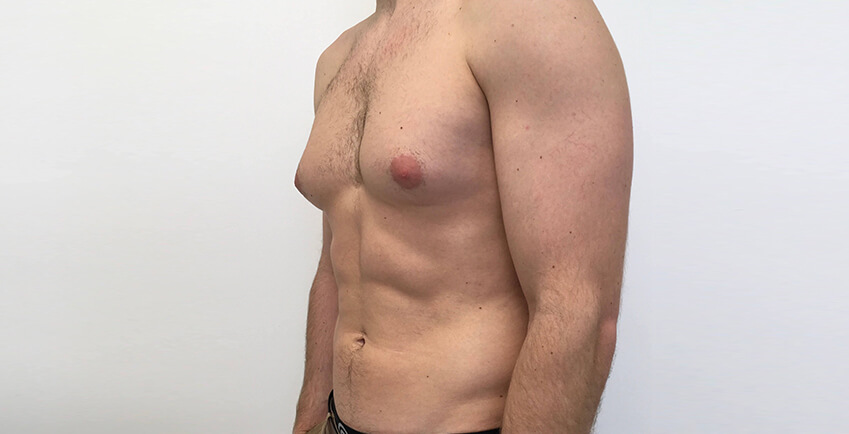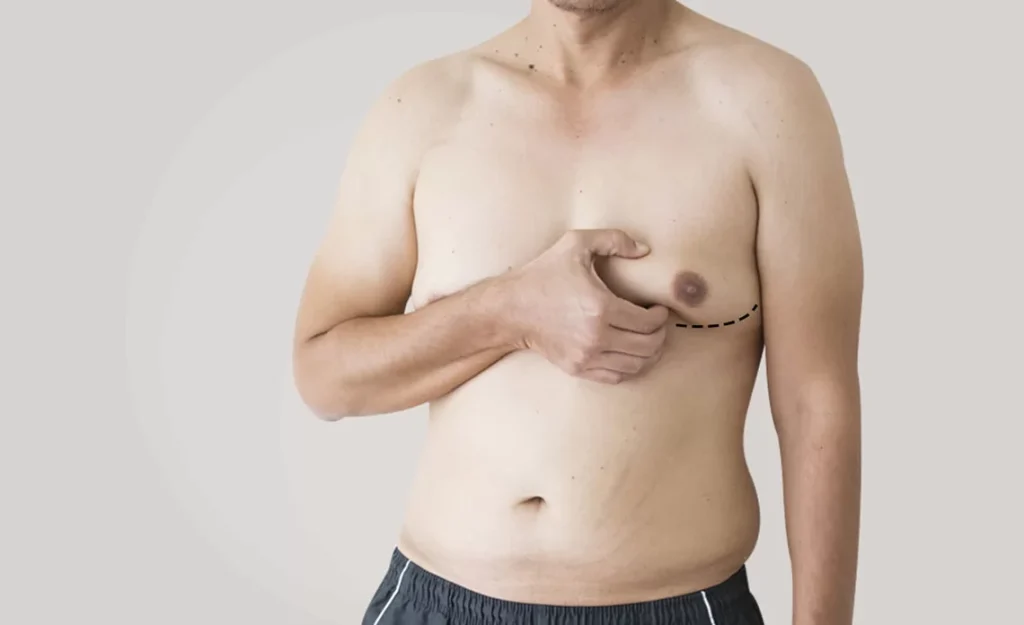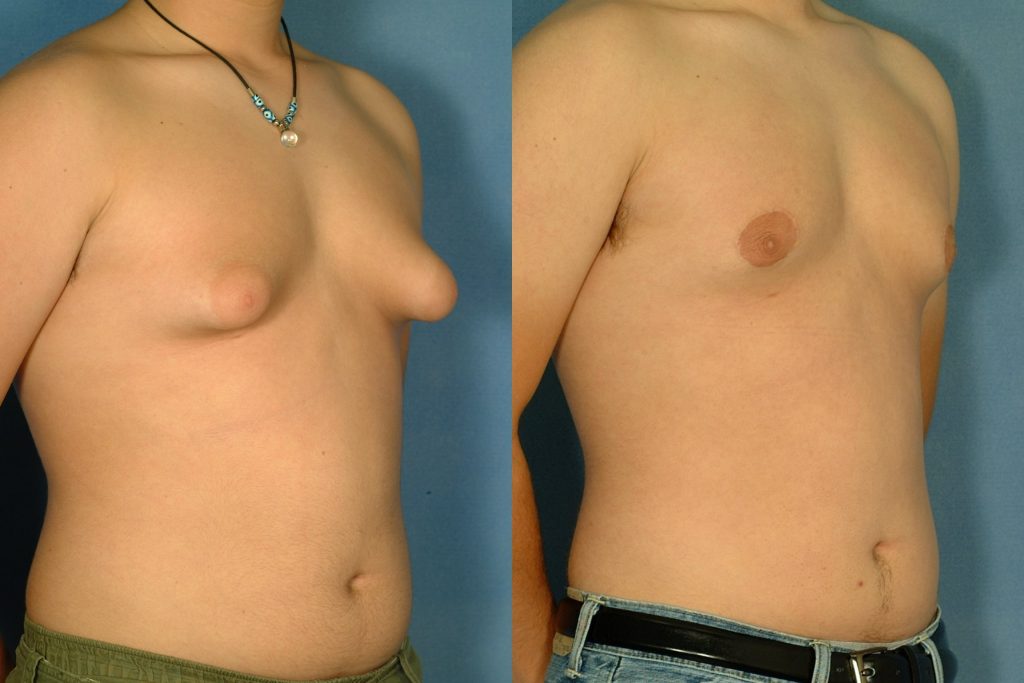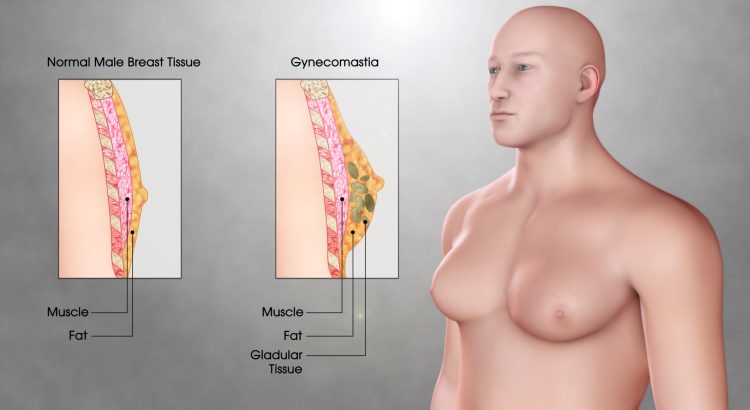Contents;
What Is Gynecomastia?

Gynecomastia is a condition characterized by the enlargement of breast tissue in males. It is a common condition that affects many men at some point in their lives. However, it can cause physical and emotional discomfort and can affect a man’s self-esteem.
| Benefits of Gynecomastia Surgery | Risks of Gynecomastia Surgery |
|---|---|
| Improved self-confidence | Infection |
| Reduced physical discomfort | Bleeding |
| Natural-looking chest contour | Scarring |
| Asymmetry | |
| Changes in nipple sensation |
Causes Of Gynecomastia

Gynecomastia is a medical condition characterized by the enlargement of breast tissue in males. It occurs due to an imbalance of hormones, specifically an increase in estrogen levels or a decrease in testosterone levels. Gynecomastia can affect males of all ages, from newborns to adults. While it is a common condition, the exact cause of gynecomastia is often unknown. However, there are several factors that can contribute to its development.
There are various causes of gynecomastia, including hormonal imbalances, medications, and underlying medical conditions. Hormonal imbalances can occur during puberty, where there is a natural increase in estrogen and a temporary decrease in testosterone. This imbalance usually resolves on its own within a few months or years. In older adults, a decline in testosterone production and an increase in estrogen can also lead to gynecomastia.
Certain medications can also cause gynecomastia as a side effect. These medications may include certain antibiotics, anti-anxiety drugs, anti-ulcer medications, and chemotherapy drugs. The use of anabolic steroids, commonly used by athletes for muscle growth, can also lead to gynecomastia due to their estrogen-like effects on the body. It is important to consult with a healthcare provider about the potential side effects of any medications being taken.
- Additionally, certain medical conditions can contribute to the development of gynecomastia. Liver disease, kidney disease, and thyroid problems can all disrupt hormone balance and lead to the enlargement of breast tissue. Tumors of the testes, adrenal glands, or pituitary gland can also cause hormonal imbalances that result in gynecomastia. In some cases, the exact cause of gynecomastia may not be identified, and it is referred to as idiopathic gynecomastia.
| Causes of Gynecomastia |
|---|
| Hormonal Imbalances |
| Medications |
| Underlying Medical Conditions |
Understanding the causes of gynecomastia is essential for its diagnosis and treatment. Identifying the underlying cause can help determine the most appropriate approach for managing the condition. It is important to consult with a healthcare professional to evaluate and diagnose gynecomastia accurately.
Symptoms And Diagnosis Of Gynecomastia

Gynecomastia is a condition that causes the enlargement of the breast tissue in males. It is not uncommon and can affect individuals of all ages. While it is often seen in newborns, it usually resolves on its own within a few weeks. However, in adolescents and adults, gynecomastia can be persistent and may require medical attention. In this blog post, we will explore the symptoms and diagnosis of gynecomastia, helping you understand the signs to look out for and how it can be diagnosed.
Symptoms of Gynecomastia: Gynecomastia can present with various symptoms, including the enlargement of one or both breasts. The breast tissue may feel tender or sensitive to touch. In some cases, individuals may experience pain or swelling in the breasts. It is important to note that gynecomastia should not be confused with breast cancer, as they are two different conditions. However, if you notice any changes in your breasts, it is essential to consult a healthcare professional for proper evaluation and diagnosis.
Diagnosis of Gynecomastia: If you suspect gynecomastia or have noticed any symptoms, it is crucial to seek medical advice. A doctor will perform a thorough physical examination to assess the breast tissue and evaluate any underlying causes. They may also inquire about your medical history and ask questions regarding any medications you are taking. In some cases, additional tests may be required, such as blood tests, hormone level assessments, or imaging studies, to rule out other potential causes and confirm a diagnosis of gynecomastia.
Non-Surgical Treatment Options

Gynecomastia is a condition characterized by the enlargement of breast tissue in males. It can be a source of embarrassment and self-consciousness for many men. While surgery is often considered the most effective treatment for severe cases of gynecomastia, there are non-surgical options available for those who prefer a less invasive approach. These non-surgical treatment options aim to reduce the appearance of enlarged breasts and improve self-confidence.
1. Medications: Medications are commonly used as a non-surgical treatment option for gynecomastia. One such medication is Tamoxifen, which is an anti-estrogen drug. It works by blocking the effects of estrogen in the body, thereby reducing breast tissue growth. Another medication, Danazol, is a synthetic derivative of testosterone that can also help reduce breast tissue. However, it is important to note that these medications may have potential side effects and should be taken under the guidance of a healthcare professional.
2. Hormone therapy: Hormone therapy is another non-surgical treatment option for gynecomastia. It involves the use of medications that can restore hormonal balance in the body. For instance, if gynecomastia is caused by an imbalance of hormones such as estrogen and testosterone, hormone therapy can help correct this imbalance and alleviate the symptoms. Hormone therapy may be recommended for individuals with pubertal gynecomastia or those with underlying hormonal disorders.
3. Lifestyle changes: In some cases, lifestyle changes can be an effective non-surgical treatment option for gynecomastia. Maintaining a healthy body weight through regular exercise and a balanced diet can help reduce excess fat and decrease breast size. Avoiding substances that can contribute to gynecomastia, such as alcohol and certain medications, may also be beneficial. Additionally, wearing compression garments or clothing designed to minimize the appearance of enlarged breasts can provide temporary relief and improve self-confidence.
| Benefits | Risks | |
|---|---|---|
| Medications | – Non-invasive- May reduce breast tissue growth- Potential improvement in self-confidence | – Possible side effects- Requires medical supervision |
| Hormone therapy | – Corrects hormonal imbalance- Alleviates symptoms- Suitable for individuals with hormonal disorders | – Potential side effects- Requires medical supervision |
| Lifestyle changes | – Non-invasive- Can help reduce excess fat- Improves overall health | – Results may vary- Not suitable for all cases |
It is important to consult with a healthcare professional before considering any non-surgical treatment options for gynecomastia. They can evaluate the severity of the condition and provide personalized recommendations based on individual needs and preferences. While non-surgical treatments can be effective for certain cases of gynecomastia, it is essential to understand that results may vary, and surgical intervention may still be required for more severe or persistent cases.
Gynecomastia Surgery Procedure
Gynecomastia is a condition characterized by the enlargement of breast tissue in males. It can occur in men of all ages and is usually caused by hormonal imbalances. While gynecomastia can often resolve on its own, severe cases may require surgical intervention. In this blog post, we will explore the gynecomastia surgery procedure, including its benefits and risks.
The gynecomastia surgery procedure, also known as male breast reduction surgery, aims to remove excess breast tissue and fat in order to achieve a more masculine chest contour. The procedure is typically performed under general anesthesia and involves several steps.
Firstly, the surgeon will make an incision around the areola or in the armpit, depending on the extent of the gynecomastia. Then, they will remove the excess breast tissue and fat either through surgical excision or a combination of excision and liposuction. The incisions are carefully closed, and a dressing or compression garment may be applied to aid in the healing process.
After the gynecomastia surgery procedure, patients can expect some swelling, bruising, and discomfort, which can be managed with medication prescribed by the surgeon. It is important to follow the surgeon’s post-operative instructions carefully to promote proper healing and reduce the risk of complications.
| Benefits of Gynecomastia Surgery: |
|---|
|
|
|
| Risks of Gynecomastia Surgery: |
|---|
|
|
|
|
Gynecomastia surgery is generally considered to be safe and effective; however, as with any surgical procedure, there are risks involved. It is essential to consult with a board-certified plastic surgeon to discuss your individual case, expectations, and potential risks.
In conclusion, gynecomastia surgery is a procedure designed to address the enlarged breast tissue in males. It involves the removal of excess tissue and fat through surgical excision or liposuction. While the procedure can offer numerous benefits, it does come with potential risks, which should be thoroughly understood and discussed with a qualified surgeon.
Gynecomastia Recovery And Aftercare
Gynecomastia is a condition characterized by the enlargement of breast tissue in males. This condition can cause physical and psychological distress for those affected. While gynecomastia can be treated through surgical procedures or non-surgical options, it is important to understand the recovery process and the aftercare required to ensure a successful outcome.
After undergoing gynecomastia surgery, it is crucial to follow proper recovery guidelines to minimize discomfort and complications. The recovery period varies for each individual, but typically, patients can expect soreness, swelling, and bruising in the chest area. It is recommended to wear a compression garment for a few weeks following the surgery to reduce swelling and provide support to the treated area.
In addition to wearing a compression garment, it is essential to avoid strenuous physical activities and heavy lifting during the recovery period. This helps in preventing any strain or damage to the chest area, allowing it to heal properly. It is advised to consult with the surgeon regarding the specific duration for which these activities should be avoided.
- Proper wound care is crucial during the recovery process. Patients should follow the surgeon’s instructions on how to clean and care for the incision sites. This may involve regular cleansing with a mild, non-abrasive soap and applying an ointment or prescribed medication to promote healing and reduce the risk of infection.
| Medications: |
|---|
| Pain management: The surgeon may prescribe pain medications to help manage any discomfort experienced during the recovery period. It is important to take these medications as directed, following the recommended dosage and timing. |
| Antibiotics: In some cases, antibiotics may be prescribed to prevent or treat any potential infections. |
- Follow-up appointments with the surgeon are essential for monitoring the healing progress and evaluating the results. These appointments also allow the surgeon to address any concerns or questions the patient may have. It is important to attend these follow-up appointments as scheduled.
During the recovery period, it is crucial to maintain a healthy lifestyle and avoid factors that can contribute to gynecomastia or affect the healing process. This includes avoiding alcohol and tobacco products, which can hinder the body’s ability to heal properly. It is also important to maintain a balanced diet and engage in light physical activity as recommended by the surgeon.
In conclusion, the recovery and aftercare following gynecomastia surgery are essential for achieving optimal results. It is important to follow the surgeon’s instructions regarding wound care, medication usage, and activity restrictions. By taking proper care during the recovery period, individuals can enhance their overall healing process and enjoy the benefits of a successful gynecomastia surgery.
Benefits And Risks Of Gynecomastia Surgery
Gynecomastia is a condition characterized by the enlargement of breast tissue in males, resulting in a female-like chest appearance. While the condition can sometimes resolve on its own, surgical intervention may be necessary in severe cases. Gynecomastia surgery, also known as male breast reduction surgery, aims to remove excess breast tissue and fat to restore a more masculine chest contour. Like any surgical procedure, gynecomastia surgery comes with both benefits and risks.
Benefits of Gynecomastia Surgery:
- Improved Self-Confidence: Gynecomastia can cause significant emotional distress and self-consciousness in affected individuals. By undergoing surgery to correct the condition, patients often experience a boost in self-confidence and improved body image.
- Enhanced Physical Appearance: Gynecomastia surgery effectively removes excess breast tissue and fat, resulting in a flatter, more masculine chest. As a result, individuals can feel more comfortable and at ease with their physical appearance.
- Elimination of Physical Discomfort: Enlarged breasts in males can cause discomfort and pain. Gynecomastia surgery alleviates these symptoms by reducing the size of the breasts, allowing individuals to engage in activities without discomfort or restrictions.
Risks of Gynecomastia Surgery:
| Risks | Description |
|---|---|
| Bleeding: | As with any surgical procedure, there is a small risk of bleeding. However, this risk is generally minimal and can be managed by an experienced surgeon. |
| Infection: | There is a risk of infection at the surgical site. Proper hygiene and post-operative care can significantly reduce this risk. |
| Scarring: | While efforts are made to minimize scarring, it is important to note that gynecomastia surgery may result in visible scars. These scars will typically fade over time but may remain partially visible. |
| Changes in Nipple Sensation: | After surgery, some individuals may experience temporary or permanent changes in nipple sensation. This can manifest as increased or decreased sensitivity. |
| Asymmetry: | In some cases, there may be slight asymmetry in the breasts following surgery. While efforts are made to achieve a balanced appearance, complete symmetry is not always possible. |
It is important for individuals considering gynecomastia surgery to thoroughly discuss the procedure and associated risks with a qualified surgeon. By understanding both the benefits and risks, individuals can make an informed decision about whether gynecomastia surgery is the right choice for them.
Please Check Other Subjects;
All Details of Hair Transplantation
What is FUE Hair Transplant Method?
Tips for a Successful Hair Transplant Recovery
